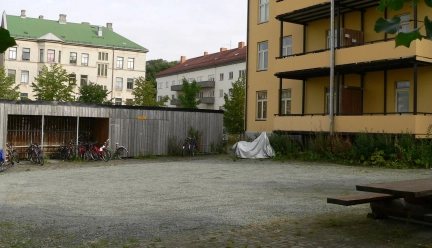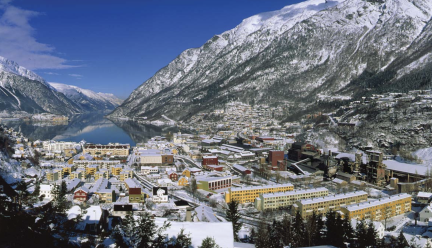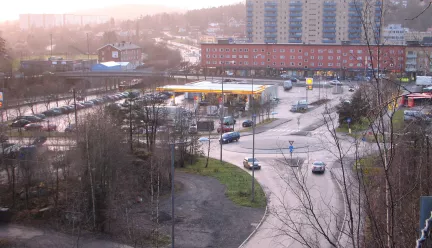European urbanity

Sustainable city and New public spaces
Urbanity can be defined as a common way of experiencing the city and its functions, and also as a conception of urban space that encourages the coming together of people in places they have in common: public space.
But where does public space begin and end? Can neighbourhood and proximity spaces be considered as belonging to the public domain? Can we term public space the new collective spaces of common interest, such as shopping centres, stations and airports?
Thinking out urbanity-bearing projects that lead to the question of the status of public space implies placing this question within the context of sustainable urban development, that is to say spatial transformation that takes account of the environment and integrates it “sustainably” into the mutation process.
The 73 sites in the session around this theme raise a set of related questions which, though they concern matters of society, nevertheless pose problems specific to space.
EXTENSIONS IN QUESTION
What is at stake today is to avoid the irrational expansion of towns taking over natural or farmland areas that have to be preserved or even improved. On some sites, competitors were confronted with the question of the most effective way to treat the potential for extension.
Thus municipalities are wondering how to compact the extensions around main roads to limit the networks and align new urbanisation along them.
Other towns are faced with the issue of the borderline between town and nature. How to end the town at certain spots in order to enhance sites of environmental value? How to restrict the extension of the town without rejecting urban development?
LOCAL MUTATIONS
Avoiding the colonisation of natural territories for necessary urbanisation compels towns to turn to development logics regarded as more “sustainable”, what one might call the strategy of internal extension. This involves converting already built sites inside and around the towns. These sites are generally occupied by amenities, industries of even obsolete residential areas. What type of urban project to propose here in order to “build the town on the town” in abandoned zones or districts needing to be revitalized?
Some of the sites in the session, rather than proposing a tabula rasa, took account of the existing for its urban value and advocated infiltration of a context with an already strongly marked identity, in order to invent its mutation.
Other sites no doubt leave more room for manoeuvre for a new project since they await the intensification of uses.
PUBLIC SPACE OPPORTUNITIES
Several sites that directly echo the theme of the session explicitly asked the question of how to manage the dynamics of investment in the public domain, in the contemporary town. How to avoid the risk of the dominance of private or privatised space to the detriment of the town’s collective aspect? How to create new types of public spaces, not as artificial forms cut off from social dynamics but linked to living spaces and benefiting from the opportunities offered by the existing urban territory?
In some situations the issue was to create spaces for “soft mobility”. In order to reveal a new perception of unexplored urban territories, these can be traversed by a combination of varied speed and scale networks.
Other sites proposed urban voids where competitors were asked to insert new types of public space and to examine their articulation with the environment. Between urbanity and privacy, the dividing line between public and private is again called into question.
NETWORKS ON THE MOVE
Concerning the upgrading of mobility networks, the municipalities wish to manage cars in town rationally so as to avoid congestion and the invasion of public space by parking, and also to encourage the diversity of modes of movement – public transport, soft mobility. The question this sustainable mobility policy raises is to find out if there exists a new way of envisaging the diversified mobility networks, not only from the technical angle but also spatially, like new elements to activate intensity and urbanity.
Some sites are marked by large high-speed infrastructures which have split the urban fabrics. Here the networks have to be modified and interconnected to urban fragments. Does the transformation of transport infrastructures allow the interlinking of different parts of the town?
Mobility produces linear networks – railways, roads etc. – but it can also produce inter-modal junction points which, if treated merely as technical structures, can also heighten the effect of territorial division. How to give urbanity by concentrating at the connection point activities related to the network but also to the urban space generated by the development of mobility?
On the other hand, certain sites proposed are tracts filled with networks. Can the impact of the interconnection be lessened by managing the effect of the network and diffusing it in the environment so as to create a district?
Europan is a platform of reflection on the transformation of the contemporary European city. Based on a small number of strategic themes around the relationship between the urban and nature, means of mobility and shared space, the different sites in their diverse contexts offer a real and significant array of challenges which, starting from a new sustainable philosophy of the city, the urban authorities have to take up. Through Europan they are looking for spatial visions of this urban approach, more ecological and cultural, which demands a mixture of reflection and projects ranging from the territory to the neighbourhood.
The sites
-

Trondheim
The main challenge is to add an innovative, sustainable, future oriented student housing complex,…
-

Odda
Originally a major tourist destination in Europe, the exploitation of hydro electrical power in the…
-

Lillestrøm
The municipality of Skedsmo is asking for innovative ideas, methods and concepts for dealing with…
-

Oslo
How can new development and programs repair the area? The challenge now is to investigate an…